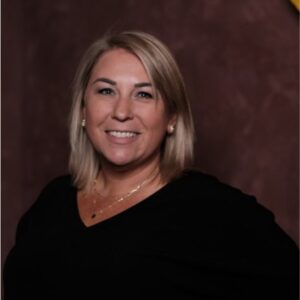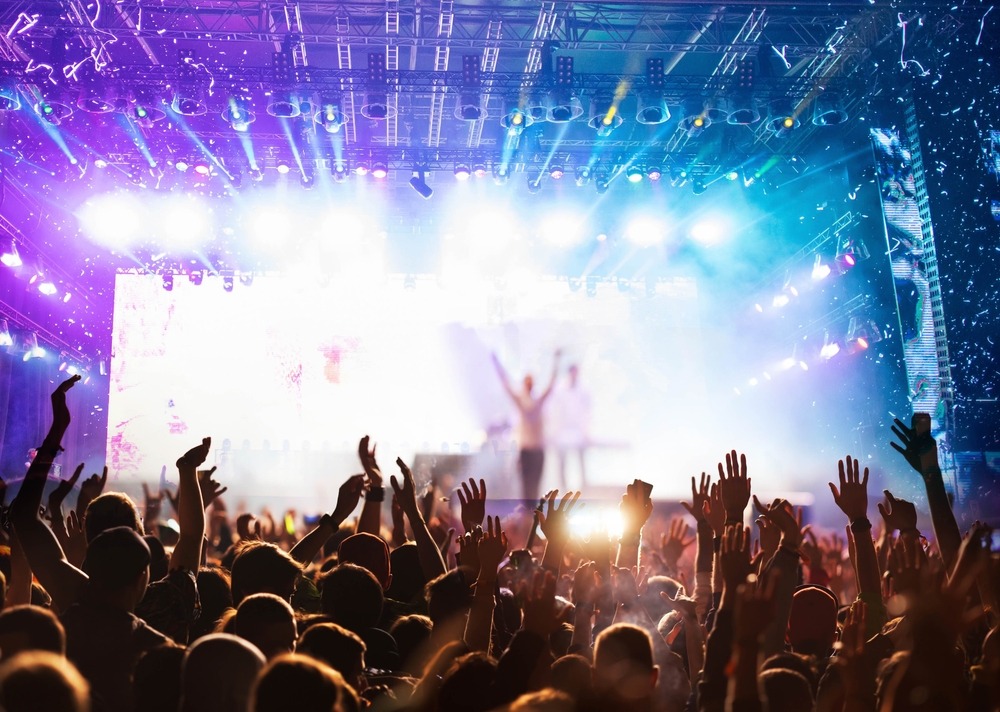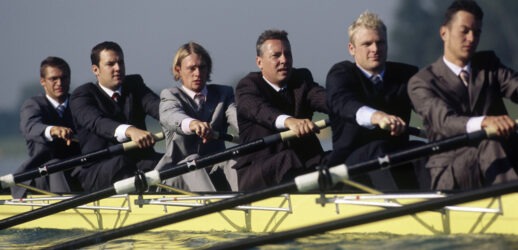How tech events fuel robust employee engagement
The tech industry is famous for its festivalized events. And, certainly, they leave a major impact. But what role does festivalization play in an event, and in the longer-term impact of employee satisfaction, really? And are there other ways tech events are achieving measurable impact with their events?
Festivalization refers to the big and the bright of events; a festival-style environment with exciting programming that usually involves live performances, light shows, art and more of the “oh wow!”
My partner works for a major tech company, and when he took me as a plus-one to an internal event, a large company celebration, we, along with the rest of the attendees, were surprised with a live performance by a certain pop superstar. My reaction was: speechless. And then: thrilled. Even remembering it now, I feel giddy. And as a person deeply involved in the events world, I wondered what kind of impact this type of internal event has on employees, and how.
With a deep dive into the real-life impact of festivalization and an analysis of all that goes into it, what can meeting professionals learn from case studies from tech companies, large and small, about how to amp up employee happiness, whether through festivalization or in another way?
Festivalization Is About Intention

Tim Simpson, a consultant for Maritz and its clients and an expert in brand culture and design, has worked with numerous tech companies on a wide range of events, festivalized and not.
“Sure, everybody wants to go to an environment that’s festivalized and fun,” he says. But to be worth the investment, fun is only the start. Even if the sudden appearance of a rock star inspires shock and awe, he’s quick to add, it also must align with the event’s goals and offer whatever value the company is seeking.
Part of his job, Simpson explains, is to attend these events and observe attendees to gain insight into their response to the programming. “One of the things I noticed about five years ago is, okay, Maroon 5 comes onstage, and you get all the [attendees] out there. But after the first song, what is mostly happening is that people are in small groups talking. They’re over at the bar, having conversations.”
Simpson’s takeaway: “Consider what you are really trying to do. Are you trying to create access to someone like The Rolling Stones, or are you trying to create an environment where people can bond?”
In other words, when a company signs on a big name to perform, it is something attendees can get excited about, a shared experience that facilitates bonding. But once the bonding begins, the performance can become a distraction that actually inhibits bonding from going further.
Simpson recommends implementing instead some kind of exciting background environment in which people can engage. “You can still have a festivalization without a big name or act,” he says. “Just spend the money intentionally.”
How do you know how to get the biggest bang for your budget? “Listen to people to understand them,” Simpson replies. “If a company makes a big investment in an internal meeting, then the company needs to get what it wants. The company can get that—employee satisfaction, employee engagement, brand- and culture-building—if it first asks [prospective attendees] what they want. If you can figure that out, you can design for it.”
Actually, It’s Simple.
Simpson once worked on a large annual event for a client that had come in over budget two years in a row; but year three, he and his team managed to cut $80,000 from that budget—and yet received a massive increase in positive feedback from attendees. The quality, it seemed, was better than ever.
How did they do it?
He realized the best strategies were often rooted in simplicity. “We studied the people we want to galvanize. To fulfill [the client’s] objectives, we need to understand what day-to-day life is like for their attendees.”
There are two paths to solving strategic challenges, he explains: keep throwing in more to see what people like, or assess what the systemic issue is and what’s causing it, and then look at how the event experience can alter that dynamic. “If we keep adding noise into the experience, it’s going to be more of a distraction. How do we simplify and remove things to get to the heart of it?”
Simpson and his team did just that—they started from scratch.
They sent out a survey, but not your average version. Called a design study, it asked questions like, “What is your tolerance level for being together?” and “How long do you want to spend in a session?” and “What kind of formats do you want?”
When the data came back, with a 67% response rate, Simpson and the team were able to assess who the people they were designing for actually were.
With the insight they gained, they cut out unnecessary, showy additions from the budget, and replaced them with very intentional programming to help both attendees and the company to achieve their goals.
Identifying Desired Outcomes
From company to company, event to event, goals might differ. Sometimes, it’s all about community and bonding. At others, professional development, or innovation. Different events serve different purposes, but their success comes down to the same formula: identifying the very specific desired outcomes and designing for their achievement based on attendee preferences.
Here are three case studies.
Case 1: Engaging Remote Workers

Nicole Kovacs, head of events at CaptivateIQ, is also a believer in understanding the day-to-day life of attendees to design events that answer to their needs.
One of her first challenges was to reimagine the company kickoff event. As a fully remote company, its employees live and work all over the United States. How could she get them truly involved in a hybrid event experience?
With the help of the company’s investors, Kovacs secured an office space in San Francisco, where a large concentration of employees lived and worked. All local employees were invited to come in person, as was the executive leadership team. Kovacs directed the bulk of her budget to a skilled AV team, which produced the event like a true show, complete with music, lighting, animations and videos. Swag bags were delivered to all remote attendees, who were also allowed to order in food and beverage. It was a special day, and the point of the event was to truly make it feel like one.
“It was really about giving the user sitting at home, at their computer in another city, a much better experience than just looking at a Zoom like they do all day long. “And everybody was really impressed,” Kovacs says. “The post-event survey showed that people really could see the production value. They felt far more engaged, and based on the sentiment and the scores, the company saw outright the very real value of spending that money.”
Case 2: Meeting Attendees’ Aspirations

At JAMIS Software Corporation, Marketing Communications and Events Manager Laura Woods has taken a simple tool for engagement and transformed it into a highly impactful program: lunch-and-learns.
Like at CaptivateIQ, employees work across the United States, so lunch-and-learns rotate to different cities, usually where there is a large concentration of employees and customers, and often when there is another company event taking place. “We make it an interactive experience, with a topic that is interesting to both the client base and employees,” says Woods. “We try to gear the topic towards whatever that conference is about—making sure we’re paying attention to the goal of attendees coming to these events.
‘It doesn’t feel like a classroom; you’re not just sitting there, watching a presentation and taking notes. [Attendees] are walking around doing interactive activities, icebreaker games.”
As Simpson explains, attendee engagement is maximized when their aspirations are realized. At these lunch-and-learns, employees of JAMIS get to engage not only with their colleagues, but also customers they work closely with—and in a very real, human way. With an understanding of attendees’ goals, Woods can tailor the theme and conversation topics. “Because if we’re not providing trainings in topic areas they’re interested in, there’s no point in us having these events for them to learn and grow,” she says.
If we’re not providing trainings in topic areas they’re interested in, there’s no point in us having these events for them to learn and grow.
– Laura Woods
Case 3: Hear from an Employee Engagement Expert

Emilie Zanger, a vendor employee at Adobe managing innovations in workplace community and well-being, spends her every working day thinking about employee engagement and happiness, and implementing programs to improve it.
Adobe is one of the big names of tech, and a company with consistently high ratings for employee satisfaction: 93% of Adobe employees say it is a great place to work, an impressive number compared to 57% at typical U.S. companies.
Her team, Adobe’s Global Workplace Experience Programs, is all about making this happen. “We are continually crafting programs and events aimed at enhancing employees’ sense of connection, community and well-being, empowering them to do their most creative and engaged work,” she says.
“Our workplace experience programs are driven by feedback from our colleagues,” explains Zanger. “As a hybrid workplace, we’ve observed that our employees are hungry to actively engage with each other and eagerly embrace opportunities to connect.
“In our recent global employee survey, about half of respondents named in-office events as a driver of office attendance—a trend even more prevalent among employees working on distributed teams, who are often geographically distant from their colleagues. Additionally, 72% of our survey respondents reported feeling more engaged when participating in office events. Employees are eager for further opportunities to connect with individuals beyond their immediate teams.”
One of her team’s recent successes is a Lego Block Party, which brings together different teams who share a floor to build Lego projects—and connections. “All Block Party attendees agreed that the event helped them feel more connected to their colleagues, and 84% agree it helped them meet new people,” says Zanger.
Importantly, Zanger’s team always asks for detailed feedback, which they see as integral to designing the next program.
The Big Idea
Why should your client or company invest in an internal event? “It’s helping [attendees] realize their aspirations,” says Simpson. “And if a company can help people realize their aspirations, it’s going to have their loyalty.”
Okay, so, how big does that investment need to be? And should it be festivalized?
There’s no doubt that festivalization works. The real question is why. Festivalization is only one aspect of an event; after the shock and awe wear off, it’s the overall program that makes the lasting impact. It’s about giving attendees an intentionally designed atmosphere—in the case of festivalization, a unique, exciting moment to bond over—in order to produce the desired outcome—genuine and lasting connection.
Kovacs, Woods and Zanger all swear by a specific recipe for programming that achieves a certain desired impact and impressive employee satisfaction: 1. Identify a need; 2. design with intention to fill that need; 3. ask for feedback about how well an event and its programming achieved that goal; and 4. use that feedback to shape the next event to fulfill attendees’ aspirations even better.
Simpson explains, this process is integral to tech: it’s in this industry’s DNA to observe people and understand their reaction to a design in order to make something that benefits peoples’ lives. But this philosophy, in events, can catapult any meeting and event from great to absolutely outstanding.
Simpson says it best, and it’s something he tells each and every one of his clients: “You don’t need a big budget; you just need big ideas.”
This article appears in the May 2024 issue. You can subscribe to the magazine here.





